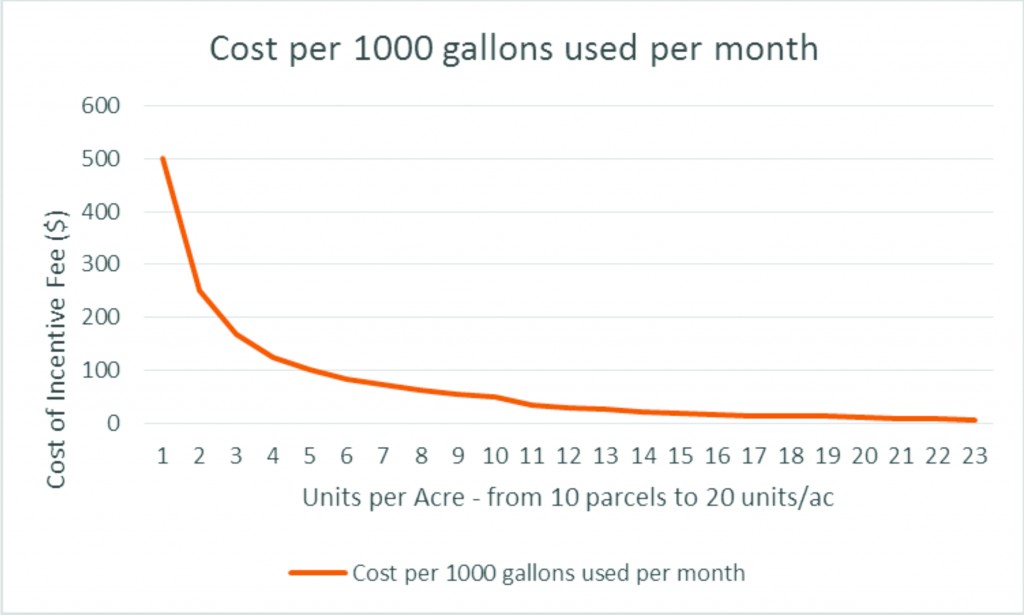Growth and Development in the Hill Country
Posted by Pix in Now and Then on Feb 11, 2014
Issues to Consider
One of the scenes from the movie, The Matrix, was germane to this subject. Mr. Smith compared the human race to a virus. One that consumes all the resources and when they are gone, moves on to repeat procedure. Although there is some parallel (albeit extreme) I have come to believe that with education and a more global understanding of the elements that influence development, a community can achieve its varied goals with an intelligent and healthy outcome.
Population is a key element of growth. Although there has been a considerable decrease in growth rate within the developed nations it is still increasing overall. The intra-national economic dynamic has caused migration patterns to trend toward southern climes. With growth rates declining in northeastern states and California. This trend will continue for the foreseeable future. Immigration also primarily targets southern states where there is more job growth.
Changes in types of employment trend toward professional services, research and development, tech and software and away from manufacturing and agriculture. Some of this is based on cost of labor and some on automation and conglomeration.
The Market is an evolving reflection of the trends manifested by consumers or “what we want”. It is based on what is popular, what is on TV or the news, what our neighbors have, what is available, what we think we need. It is interpreted by home builders, car manufacturers, fashion designers and as a whole, ignorant of peripheral consequences….the proverbial “chicken with its head cut off”. It does, however, qualify (control) the financing of growth and development.
 Real Estate or location and availability are part of the Market dynamic but also become the focal point of concern when there are sensitivities or exclusivities. The obvious part of this element is the very thing that makes them attractive to home buyers makes them difficult to develop economically and to also go light on the land. There is also the desire the “close the door” to any further development by those who have already got their exclusive property (commonly known as the NIMBY – NotInMyBackYard effect).
Real Estate or location and availability are part of the Market dynamic but also become the focal point of concern when there are sensitivities or exclusivities. The obvious part of this element is the very thing that makes them attractive to home buyers makes them difficult to develop economically and to also go light on the land. There is also the desire the “close the door” to any further development by those who have already got their exclusive property (commonly known as the NIMBY – NotInMyBackYard effect).
Infrastructure plays a role in growth and development. Roads and Utilities furnish the access and quality-of-life elements necessary for a density that would afford the additional costs of a quality and style suitable for product type and necessary environmental features/controls. This is an important dynamic to understand. The rougher the terrain, the more there is a need for mitigation of impact, the more the development is spread out, the more the investment. This becomes a market determination for a developer. With these investment costs in mind, will the final cost of the product be viable within the current market. This is typically why higher density projects are preferable.
From the standpoint of the Public Sector, any development represents some level of operation and maintenance costs. Roads, public utilities, fire, law enforcement, etc. all have to be matched to the growth and development. These services (costs) are also more economically provided in a denser development than is the case for a very rural and dispersed development environment. The many types of special districts that can furnish these services and fund the maintenance can affect how competitive a development area will be in the marketplace.
There are numerous tools utilized to assist with the financing of growth and development. Aside from the typical taxing jurisdictions (cities, counties, state, federal, fire control districts, ISD’s), there are special districts that can levy a tax or assessment or fee for the purposes of reimbursing development for its initial costs of infrastructure. These special districts (Municipal Utility Districts, Public Improvement Districts, Water Control and Improvement Districts, etc.) however, can make a development un-competitive. A Developer has to determine whether the additional cost to the homeowner for the special district, makes the development too expensive to compete with a similar project in the vicinity.
 The three most important pieces of infrastructure necessary for growth are access (typically roads), water and electricity. These three items can take many shapes and may be provided in multiple manners but the options for service have highly divergent cost considerations. Some of these options are not acceptable to lenders. The certainty of service always reflects a higher value than uncertain provisions. For example, a home located on a dirt road that utilizes rain water collection and solar based power would have considerably more value (to a lender) for the same square footage and trim if it were on a paved road, on a water system with electric service. It is also important to remember that the emergency services, road maintenance and police protection depend on land values (tax collection) to fund them. Typically communities in Central Texas need a home value of $300,000 to break even on that cost of service. That is why non-residential tax base is critical, as a mix in development.
The three most important pieces of infrastructure necessary for growth are access (typically roads), water and electricity. These three items can take many shapes and may be provided in multiple manners but the options for service have highly divergent cost considerations. Some of these options are not acceptable to lenders. The certainty of service always reflects a higher value than uncertain provisions. For example, a home located on a dirt road that utilizes rain water collection and solar based power would have considerably more value (to a lender) for the same square footage and trim if it were on a paved road, on a water system with electric service. It is also important to remember that the emergency services, road maintenance and police protection depend on land values (tax collection) to fund them. Typically communities in Central Texas need a home value of $300,000 to break even on that cost of service. That is why non-residential tax base is critical, as a mix in development.
The topography, flora and fauna determine how attractive an area is to a buyer (to the market). Typically the most desirable locations are also the most sensitive. They have more vegetative cover, steeper slopes (views), more waterways, etc. and all of those elements also make them more expensive to develop with paved roads, centralized water and electricity. There are strategies for development that can mitigate much of the impact on these areas and need to be considered since the development of them, in the vicinity of employment centers, is inevitable.
Development Strategies
Growth projections for Central Texas are daunting. Even if a significant portion of the population that migrates to the region prefer urban living, there will surely be a great deal of pressure on the Hill Country for growth and development. This paper will concentrate on strategies for the Hill Country since many of these may also apply to the Coastal Plains, east of IH-35.
Roads
Most wish to locate in the Hill Country for views and the general beauty of the topography. This aspect justifies a need to provide substantial buffers along roadways. Substantial enough to hide development on either side of the road. Even if this is primarily along major connectors (arterials and collectors) it will have a profound effect on maintaining the look and feel of the environs and will also provide improved water quality from roadway runoff. With this approach it is possible to build fewer lanes for major roadways with controlled intersections. Rather than driveways accessing these roadways have development build parallel roadways or slip roads to provide driveway and internal connections. If this approach is utilized at major intersections then allowing the slip roads to come closer to the main roadway can accommodate neighborhood services or commercial uses to still be visible from the roadway.
Where existing major roadways are intersected by new arterials or collectors, narrow the lanes as they approach the intersection. Include landscaping and aesthetic clutter to slow the traffic as it approaches the intersection. This provides for a safer intersection and also allows the opportunity for vegetative buffers for the purpose of passive water quality enhancements and more easily discernable traffic lane options, especially during weather events. Any enhancements added to an intersection must have a “roll over” capability, that is, capable of having the wheels of emergency vehicles cross without damage to the vehicle.
As a rule, roadways should be narrower than is the current design standard. It reduces speed, reduces cost, reduces runoff impacts (volume and quality) and better reflects the nature of the environs. That said, it begs the need to manage sprawl. It will be critical for the future of Central Texas to replicate employment centers and reduce the need for a majority of the population to commute. We can’t build roads big enough to accommodate the need if growth continues its current trend.
Water
 There are limited capabilities in the Texas Counties to influence or manage growth. One possibility is through the distribution of potable water. If Counties or Publicly controlled entities developed policy and service requirements for water, there would be a significant tool for influencing growth patterns.
There are limited capabilities in the Texas Counties to influence or manage growth. One possibility is through the distribution of potable water. If Counties or Publicly controlled entities developed policy and service requirements for water, there would be a significant tool for influencing growth patterns.
There is a growing consensus that we would be better off developing “Centers” than continuing the sprawl of suburban development. These Centers would include services, employment, commercial, residential and all the elements of a town. The residential development within the Centers would be denser than typical of the current “Master Planned Communities” that typify the growth patterns we see today surrounding Cities. Many of these centers would have residential densities of 5 to 20 units per acre.

If this pattern were to beencouraged to occur in areas where the topography was both appropriate and conducive, an incentive approach for water service could be structured. For instance a rate could be structured so that it was too costly for the typical large lot residential but more affordable for a centers type development.
An Incentive Fee
This “incentive fee” would be separate and apart from any impact fee or standard rate and could generate revenue to fund other utility services, perhaps wastewater.
Where there is density it is preferable to centralize wastewater treatment. The greater cost of systems capable of assuring both quality and safety could also become an element in a rate incentive to more sustainable growth.
water from more “urban” areas is also best treated as wastewater. Centralized treatment assures quality and safety (prevention of accidental discharge or acts of nature) it also allows for more options for recycling and reuse.
builder/homebuyer), or other public financing districts such as Tax Increment Financing (TIF), Special Utility Districts (SUD), or sale of revenuebonds from a public entity.
There is always a quid pro quo that can be identified. Agreeing on that balance is something else. It is, however, important to assume two things: growth is inevitable where there are views and relief (market demand); and demand can be satisfied in a sustainable manner if the feasibility and cost can make a better product worth developing.
